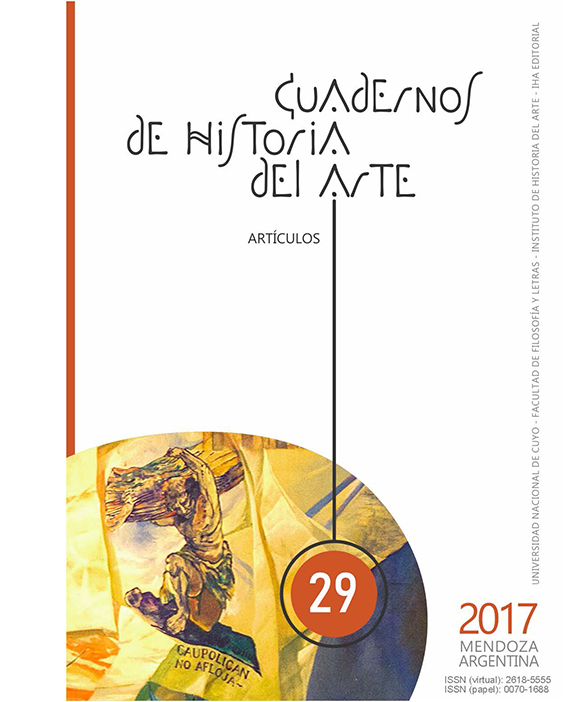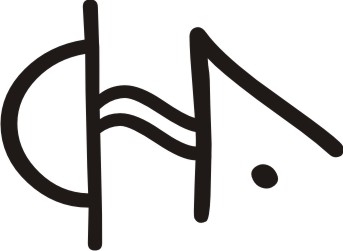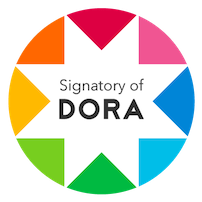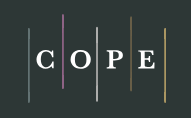Painting, Independence and Education. The evolution of Chilean Fine Arts in the 19th century
Keywords:
Educación artística, Pintura, Chile, Emancipación, Artistic education, Painting, Emancipation, Educação Artistica, Emancipação.Abstract
The significant evolution of Chilean Fine Arts during the passage from the 18th to the 19th century has its raison d’etre in two factors. The first one was the boost to the systematization of artistic studies in the education of young artists. Since 1796, with the foundation of the Academia de San Luis in Santiago thanks to the erudite Manuel de Salas’ effort, the required forms of academic institution that recognized in drawing the essential discipline in the process of artistic learning, started to be set up.
From the 19th century onwards, the National Institute, the Painting Academy and other institutions started focusing artistic studies on Fine Arts rather than with the field of industry and agriculture.
The Chilean art painting experienced a change in artistic trends to forms that Antonio Romera in 1969 thoroughly defined as "tropical romanticism", and that from our point of view has the best performer in the French Monvoisin.
This consideration takes us straight to the second factor, that is, the presence in Chilean territory of foreign artists. The "travelers" who not only introduced innovative stylistic changes in Chilean painting, but also who accelerated the circulation of artistic treaties, books and engraves that, from Europe, nurtured a real remodeling of the discourse about aesthetic matters and of taste.
In the following pages, we are going to demonstrate how these circumstances, coexisted due to a social and politic context which allowed it, favoured a real development of Fine Arts in Chile.
Proof of it are the words pronounced by the Italian painter Alessandro Ciccarelli in the Painting Academy inauguration speech. Referring to his educational project to make Chilean Fine Arts more relevant, he applied the refined system that the theorist Winckelmann in 1764 applied to the study of Grecian Art History of the 5th century B.C.
The Prussian historian linked certain politic, geographic and climatic conditions to the creation of a positive context for the development of Arts. In Santiago this positive circumstances were developing in that moment, thus Ciccarelli gave to the young country the pleasant nickname of "Athens of South America".
References
AAVV., Historia de Chile, 1808-1994, (Cambridge: Cambridge University Press, 1998).
AAVV.. La misión y los jesuitas en la América española, 1566-1767: cambios y permanencias, (Madrid: Consejo Superior de Investigaciones Científicas, 2005).
AMUNATEGUI Miguel Luis, Los precursores de la Independencia de Chile, (Santiago: Imprenta Litografía i Encuadernación Barcelona, 1910).
AMUNATEGUI, Miguel Luis. "Apuntes sobre lo que han sido las Bellas Artes en Chile", en Revista de Santiago, (Santiago de Chile: Imp. Chilena, abril 1849), , n.II, pp 37-47.
AMUNATEGUI, Miguel Luis. Don Manuel de Salas, (Santiago de Chile: Imprenta Nacional, 1895).
AMUNATEGUI SOLAR, Domingo. Los primeros años del Instituto Nacional, (Santiago de Chile, Imprenta Cervantes, 1889).
ARANEDA BRAVO, Fidel. El barroco jesuita chileno, (Concepción: Eds. Revista Atenea, 1965).
BERRÍOS, Pablo. Del taller a las aulas: la institución moderna del arte en Chile (1797-1910), (Santiago: Estudios de Arte, 2009).
BÖHM, Günther. "Artistas Judíos en Chile en el Siglo XIX", Separata de la Revista Judaica Iberoamericana, Nº 2, (Santiago, Ed. Universidad de Chile, 1978).
BRAVO LIRA, Bernardino. El Barroco en Hispanoamérica: manifestaciones y significación, Fondo Histórico y Bibliográfico José Toribio Medina, (Santiago: Imprenta Nacional, 1938).
CAMPOS HARRIET, Fernando et al.. Estudios sobre la época de Carlos III en el reino de Chile, (Santiago: Ediciones de la Universidad de Chile, 1989).
CELIS MUÑOZ, Luis. "Manuel de Salas. Pensamiento educativo en tiempo de transición", en Revista Pensamiento Educativo, (Santiago: Ed. Pontificia Universidad Católica de Chile, junio 2004) n. 34, 1, pp. 18-27.
CICCARELLI, Alejandro y CHACÓN, Jacinto. Discurso pronunciado en la inauguración de la Academia de Pintura por su director Alejandro Ciccarelli: seguido de la contestación en verso leída por D. Jacinto Chacón, (Santiago: Imprenta Chilena, 1849.
CRUZ OVALLE, Isabel. Arte: lo mejor en la historia de la pintura y escultura en Chile, (Santiago de Chile: Ed. Antártica, 1984), Pt 10, cap. I, 57-112.
DUARTE GUTIÉRREZ, Patricio. "Razón de identidad histórica y posibilidades de expresión en el espacio público de Independencia", en Revista de Urbanismo, n. 4, (Santiago de Chile: Ed. Universidad de Chile, 2001), pp. 1-38.
FERNÁNDEZ DÍAZ, Roberto. Carlos III. (Madrid: Arlanza, 2001).
FRONTAURA Y ARANA, José Manuel. Historia del Convictorio Carolino, (Santiago de Chile: Imprenta Nacional, 1889).
JAKSIC, Iván. "Sarmiento y la prensa chilena del siglo XIX", en Historia, n. 26 (Santiago de Chile: Instituto de Historia de la Universidad Católica de Chile, 1991), pp. 117-144.
JAKSIC, Iván. Andrés Bello: La pasión por el orden, (Santiago de Chile: Ed. Universitaria, 2010).
JOCELYN -HOLT Alfredo, El peso de la noche: nuestra frágil fortaleza histórica; José Gil de Castro y la Nueva Sensibilidad. (Santiago: Ed. Planeta,1999).
LASTARRIA, José Victorino. Discurso de incorporación de D. J. Victorino Lastarria a una Sociedad de Literatura de Santiago, en la sesión del tres de mayo de 1842, (Valparaíso, Impr. de M. Rivadeneyra, 1842).
MAJLUF, Natalia, José Gil de Castro. Pintor de libertadores. Catálogo de la exposición, (Lima: Asociación Museo de Arte de Lima, 2014).
MESA, José de y GISBERT, Teresa. Historia de la pintura cuzqueña, (Lima, Fundación A.N. Wiese, 1982).
MODIANO, Ignacio. Toesca: arquitecto itinerante de la tradición clásica del siglo XVIII y otros ensayos, (Santiago de Chile: Eds. Del Pirata, 1955).
PANIAGUA PÉREZ, Jesús. España y América entre el Barroco y la Ilustración (1722-1804): II Centenario de la muerte del Cardenal Lorenzana (1804-2004), (León, Ed. Universidad de León, 2005).
PEREIRA SALAS, Eugenio, Historia del Arte del Reino de Chile, (Santiago de Chile, Ed. Universidad de Chile, 1965.
RÁBAGO CORDERO, Ana Silvia. "El concepto de literatura en Chile durante la década de 1840: José Victorino Lastarria y la Sociedad Literaria", en Históricas, Boletín del Instituto de Investigaciones Históricas de la UNAM, n. 100 (México DF: Ed. Universidad Nacional Autónoma de México, mayo-agosto 2014), pp. 29- 40.
RÁMIREZ RIVERA, Hugo Rodolfo, Fuentes para el estudio de la Historia de Chile,(Santiago de Chile: UNESCO, Dirección de Bibliotecas, Archivos y Museos, 1984).
RIPAMONTI MONTT, Valentina. "Academia de Pintura en Chile. Sus momentos previos", en Intus- Legere: Historia 4-1, (Santiago: Ed. Universidad Adolfo Ibañez, 2010), pp. 127-156.
ROETTGEN, Steffi. Anton Raphael Mengs: 1728-1779, (Munich: Hirmer, 2003).
ROMERA, ANTONIO. Asedio a la Pintura Chilena (Desde el Mulato Gil de Castro a los Bodegones Literarios de Luis Durand, (Santiago de Chile: Editorial Nascimento, 1969).
SALAS, Manuel. Escritos de Don Manuel de Salas: y documentos relativos a él y a su familia, (Santiago de Chile: Ed. Universidad de Chile, 1914).
SERRANO, Sol. "La Revolución Francesa y la formación nacional de educación en Chile", en KREBS Ricardo y GAZMURI Cristian, La Revolución Francesa y Chile, (Santiago de Chile: Universitaria 1990), pp. 247-275.
SILVA CASTRO, Raúl. Prensa y periodismo en Chile: (1812-1956), (Santiago de Chile: Biblioteca Nacional de Chile, 2002).
STUVEN, Ana María. "La generación de 1842 y la conciencia nacional chilena", en Revista de Ciencia Política, n. 1, vol. IX (Santiago: Pontificia Universidad Católica de Chile, 1987), p. 61-80.
ÚBEDA DE LOS COBOS, Andrés. Pensamiento artístico español del siglo XVIII. De Antonio Palomino a Francisco de Goya, (Madrid: Museo Nacional del Prado, 2001).
VILLEGAS VERGARA, Lautaro Ignacio, et al.. Dibujo en Chile (1797-1999). Variaciones epistemológicas, aplicaciones profesionales (Santiago: Lom Ediciones, 2017).
Fuentes Documentales consultadas
Archivo Nacional de Chile (ANC), Fondo Vario, volúmenes: 175; 254; 275; 747; 749; 754; 801.
ANC, Fondo Vario, vol. 280, ff 15, Decreto de la Junta Nacional de Gobierno que incorpora la Universidad de san Felipe al Instituto Nacional. Firmado en el Palacio de Gobierno: Francisco Antonio Pérez, Agustín de Ayzaguirre, Juan de Egaña, José Tadeo Mancheño, Santiago de Chile, 2 de agosto de 1813.
ANC, Fondo Vario, vol. 155, ff 43-44, Carta de Manuel de Salas enviada al Gobernador (Presidente) de Chile Luis Muños de Guzmán, 12 de agosto de 1802.
ANC, Fondo Vario, vol. 156 ff.26-27, Carta de Manuel de Salas, del 11 de abril de 1811, dirigida al Presidente y a los vocales de la Junta Provisional de Gobierno.
Downloads
Published
How to Cite
Issue
Section
License
Los artículos enviados al Comité Editor del Instituto de Historia del Arte, para ser publicados, los autores reservan su derecho de propiedad, pero otorgan a la Editorial los derechos de impresión y aceptan la difusión tanto en papel, como en internet y en aquellos sitios virtuales de las cuales los CHA formen parte.

Esta obra está bajo una Licencia Creative Commons Atribución-NoComercial-CompartirIgual 3.0 No portada



















_00.07_.55_2.png)




